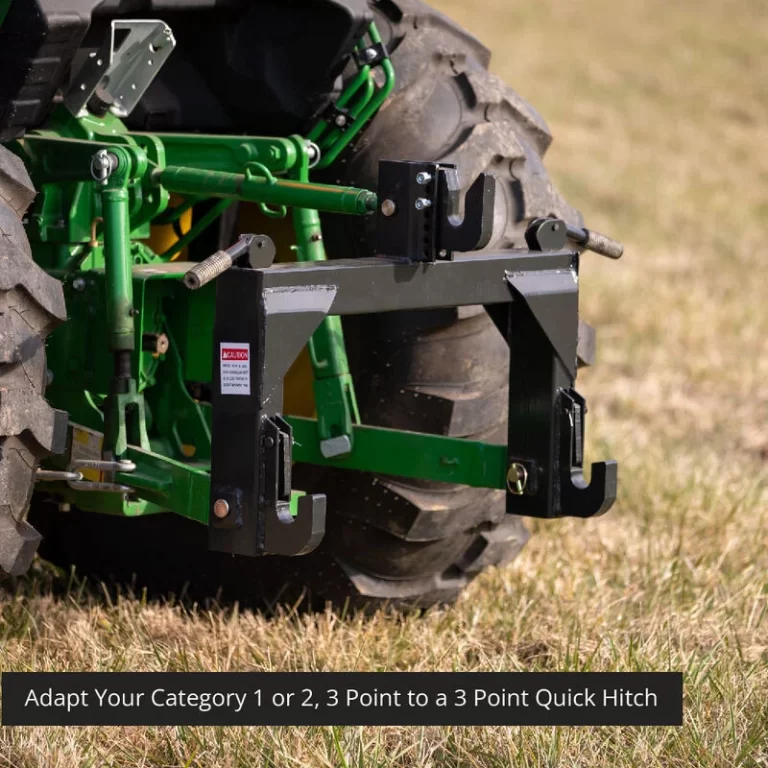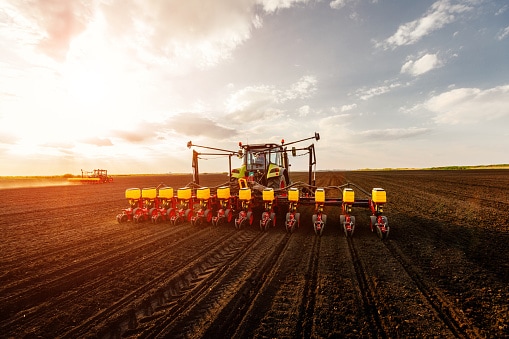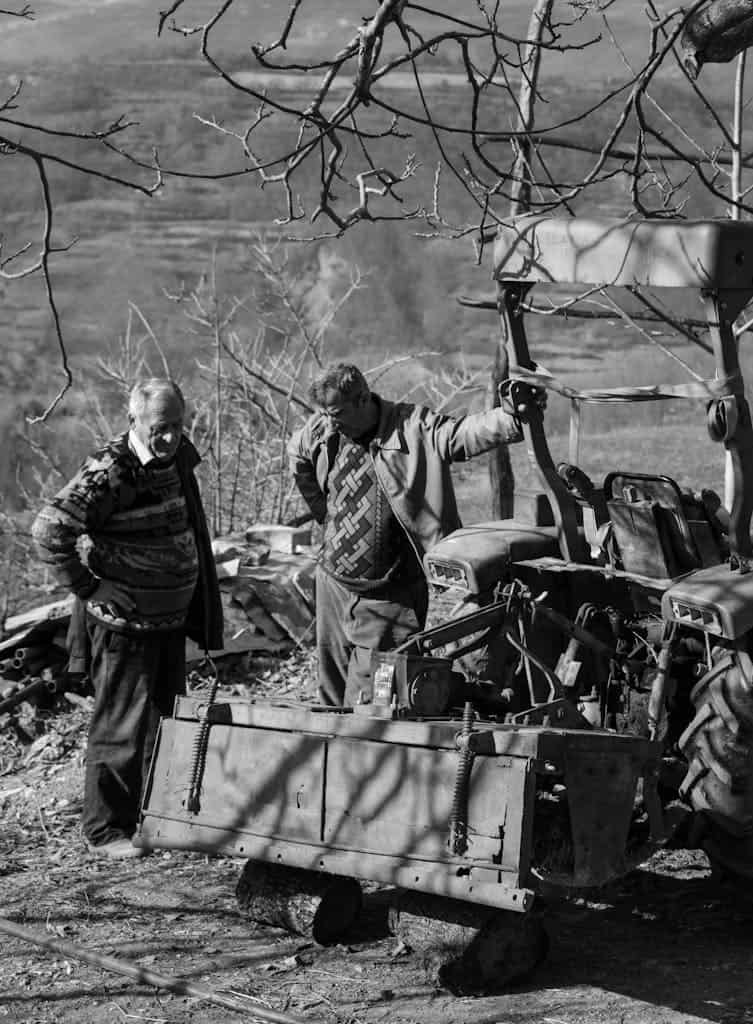Top Classic Tractors: A Journey Through Timeless Farm Power Icons
Looking for the top classic tractors that redefined farming? Dive straight into this streamlined guide that spotlights the most remarkable machines of yesteryear. From powerhouse pioneers to feats of engineering that captivated the agriculture world, these tractors aren’t just relics—they’re mechanical legends.
Key Takeaways
Classic tractors played a pivotal role in agricultural history with technological advancements such as pneumatic tires, hydraulic lifts, and power take-off, influencing modern farming practices and maintaining a cultural heritage.
Tractor restoration is an intricate and highly valued process that requires expertise in metalwork, engine rebuilding, and the application of historical paint and decals, ensuring these vintage machines retain their original appearance and functionality.
Rare tractors such as the Allis-Chalmers Fuel Cell Tractor and the International Harvester HT-341 Turbine Tractor showcase the innovative efforts of the past and are sought after by collectors, fetching high prices at auctions due to their historical significance and scarcity.
Classic Tractor Hall of Fame
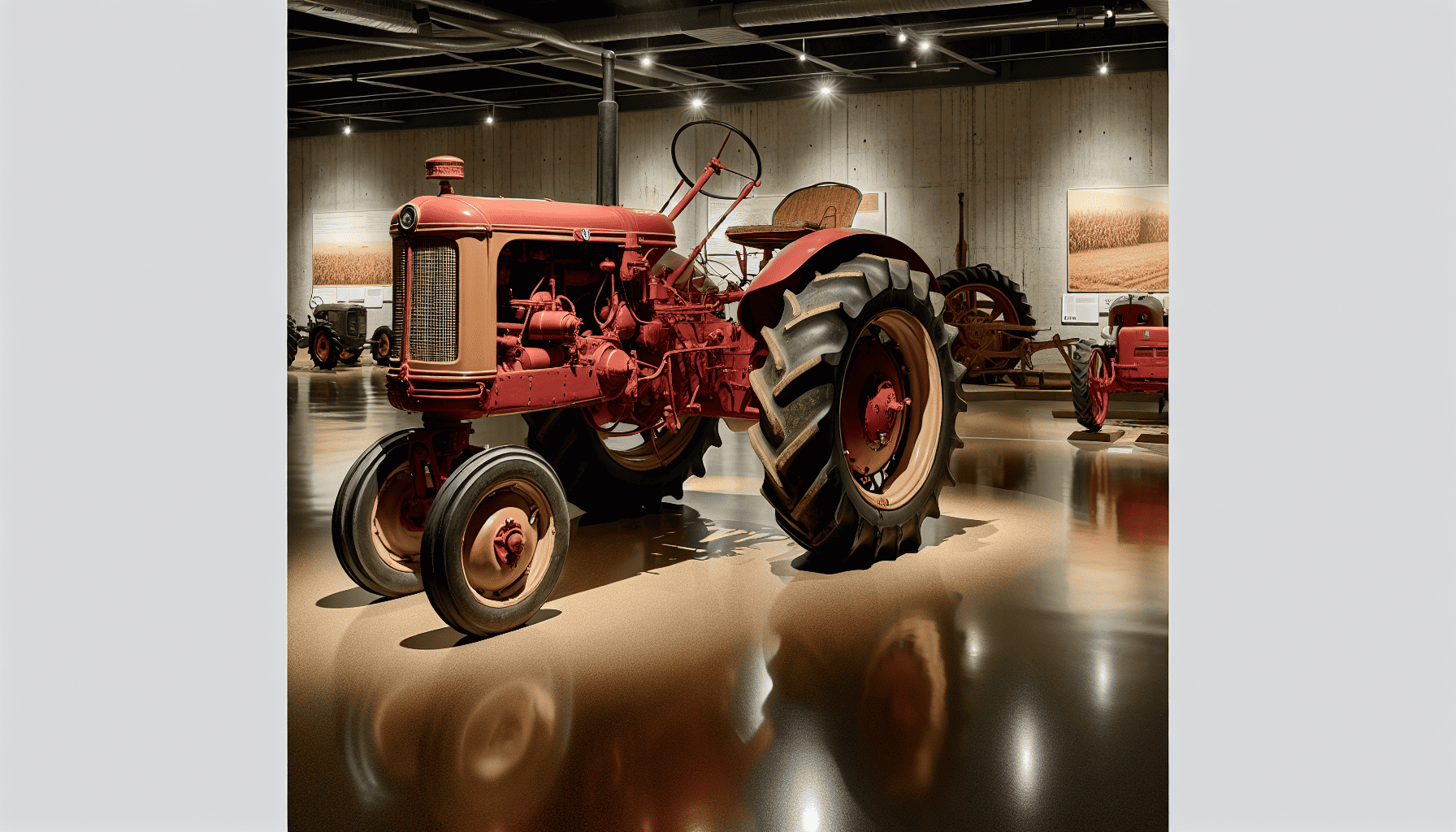
The dawn of the agricultural revolution in America was marked by early tractors like the 1918 Waterloo Boy. These machines sparked a shift from steam-powered to internal combustion engine tractors in the early 1900s, leading to advancements in tractor technology and usability under tough farming conditions. The adoption of tractors brought about innovations such as:
Transmissions
Pneumatic tires
Hydraulic lifts
Power take-off
Three-point hitches
These advancements significantly enhanced agricultural productivity. Classic tractors, such as the Case L tractor and the Fordson Major E27N tractor, are considered timeless classics and favorites at rallies.
While modern farm machinery has become more technologically complex, classic tractors are appreciated for their simplicity and robustness. Tractor events often serve as an educational platform where attendees can learn about agricultural history and the evolution of farming equipment. We’ll explore the hall of fame of classic tractors, starting with the iconic Ford 8N.
Ford 8N Tractor
Launched in 1947, the Ford 8N quickly became one of the most sought-after tractors, amassing sales of over 500,000 units before its production ceased in 1952. The tractor stood out by offering substantial improvements compared to its predecessors, the 9N and 2N models, which included a stronger four-speed transmission and enhanced horsepower capabilities.
With an emphasis on reducing oil leakages common at that time, the Ford 8N was constructed with a reliable L head engine across four cylinders. It also boasted a robust hydraulic system for reliability along with independent brakes – elements that contributed to this venerable tractor’s reputation as an agricultural powerhouse instrumental in transforming farming methods throughout America.
John Deere Model A
The first genuine row-crop tractor from John Deere, the Model A, made its debut in 1934 and continued production until 1952. Featuring a notable two-cylinder engine, an affordable price tag, and a non-synchronized gear transmission system, this particular model became a landmark event in the company’s history.
There were notable upgrades to the Model A throughout its time on the market: it received an enlarged engine during its launch year of 1934, improvements were brought to its transmission by 1941, plus there was integration of electric starters and lights as standard features eventually. To these updates, by 1947 modifications had been done that repositioned the battery under the seat for improved accessibility.
Closing out nearly twenty years of significant presence within agricultural circles was the cessation of production for John Deere’s Model A tractor in 1952 after achieving manufacturing figures totaling over three hundred thousand units.
Farmall Model H
Launched by International Harvester in 1939, the Farmall Model H quickly became their most popular tractor on the market. Throughout its production run until 1953, it saw more than 390,000 units produced, marking a significant era of mechanization within American agriculture. As a successor to the F-20 model, this particular tractor boasted an upgraded aesthetic design and was equipped with innovative features such as a positive ground electrical system powered by a generator and multiple wheel configurations that could be adjusted for varying row widths associated with different crops.
The primary engine powering the original Farmall H was the robust International Harvester C152—a four-cylinder inline power source designed for optimal performance on larger agricultural operations capable of maintaining up to 160 acres specializing in row crops like potatoes or sugar beets. With time came Advancements. Subsequent models including Super H followed by Series 300 and then Series 350 emerged featuring enhancements ranging from increased engine capacity for greater horsepower output to modernized transmission systems—these developments allowed production of these iconic tractors to continue all through until year-end1963.
The Art of Tractor Restoration
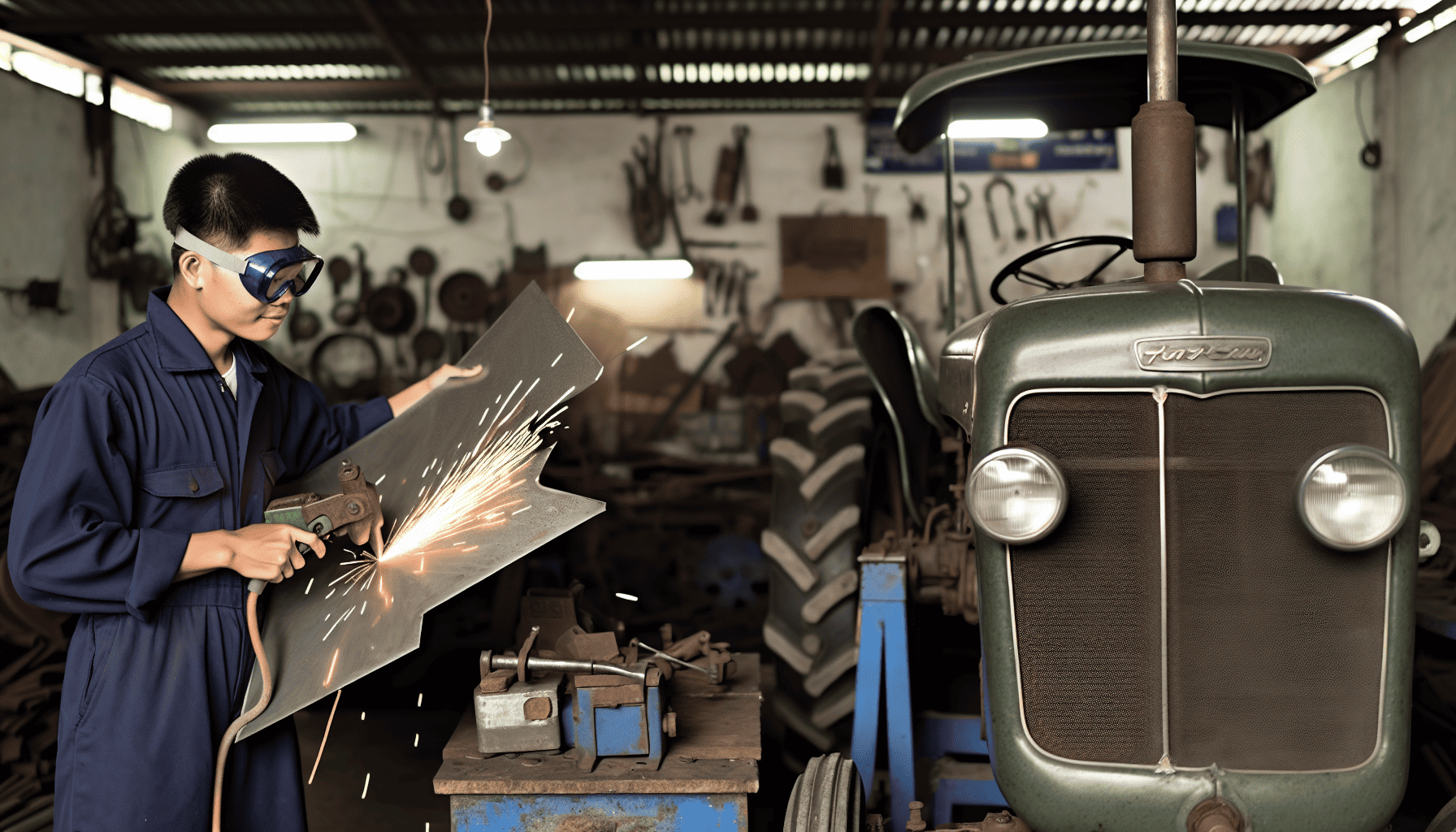
The process of restoring a tractor is an exacting and intricate task that plays a crucial role in reviving the essence of these ageless machines, preserving their historical value. Restored tractors become living symbols of bygone days, reflecting the evolutionary steps that shaped contemporary agricultural techniques. The restoration encompasses various aspects such as refurbishing sheet metal, overhauling engines, and applying fresh coats of paint along with authentic decals to retain the machine’s classic look while securing its operational capacity.
In depth, we will delve into each step starting with the nuances involved in working on sheet metal.
Sheet Metal Work
The restoration of sheet metal plays a pivotal role in the process of tractor restoration, as it not only rejuvenates the aesthetic appeal but also maintains its operational capacity. The initial step involves using sandblasting to strip away any existing paint and corrosion from vintage tractors, succeeded by applying different types of primers on various components to set the stage for painting.
Employing both modern and time-honored techniques for bodywork, along with crafting new pieces of sheet metal when necessary, assures that tractors retain their structural soundness after undergoing a full restoration. During assembly, attention is given to bolt restorations to prevent compromising the work done thus far. Meticulous final touches are applied ensuring that once restored each tractor looks impeccable upon completion.
Engine Rebuilds
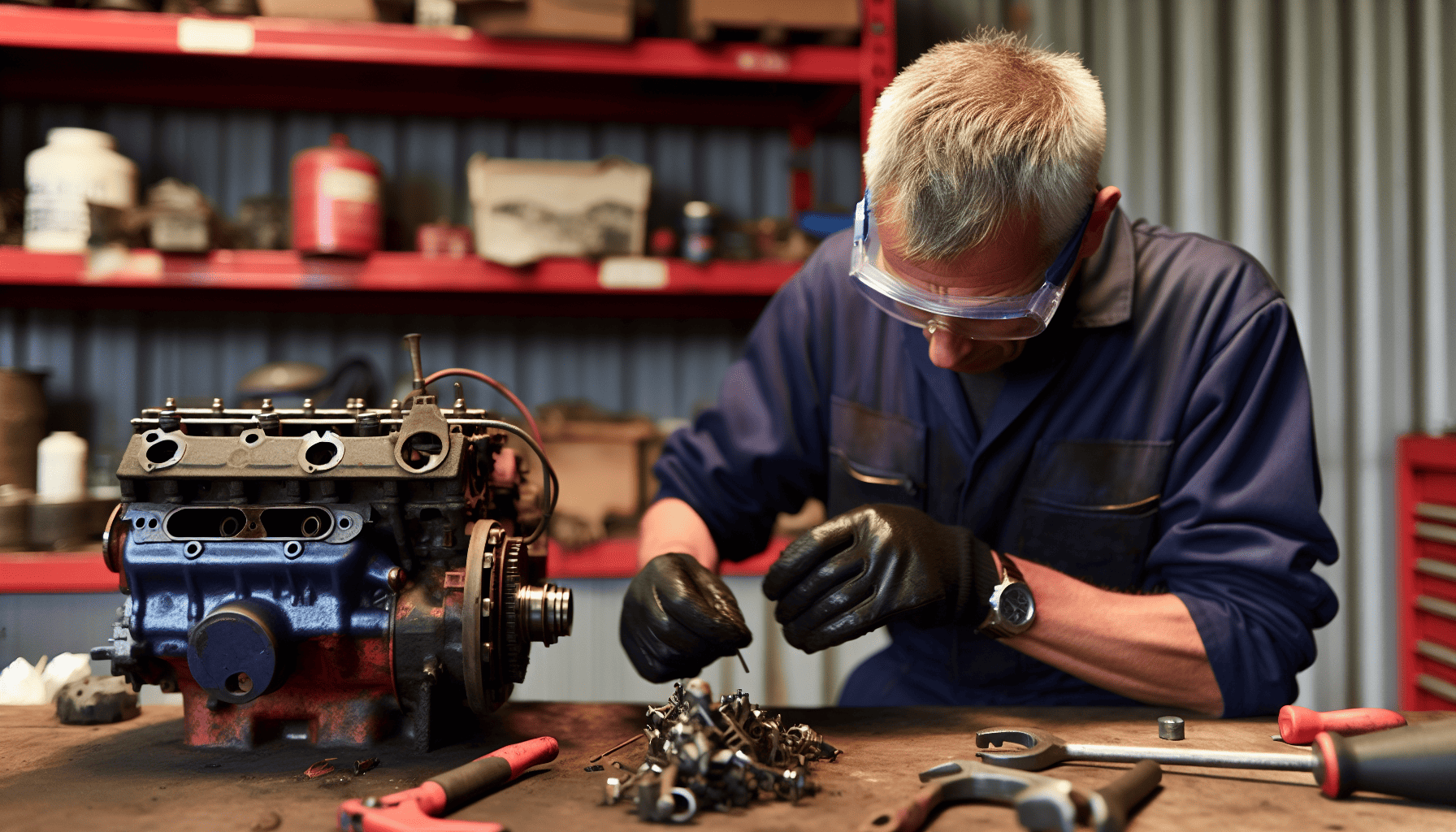
The process of restoring classic tractor engines involves meticulously taking apart, examining, and either repairing or substituting worn components to ensure the engine returns to its best possible condition. This rejuvenation not only extends the lifespan and dependability of the engine, but often incorporates upgrading certain parts for greater efficiency.
When tackling a rebuild on an old tractor’s engine, common issues are encountered including burnt valves, head gaskets that have been compromised, and reduced oil pressure, all typically stemming from regular deterioration. The overhaul frequently addresses these problems by focusing on replacing items that deteriorate due to inadequate maintenance, such as oil filters and the oil itself, which are essential for maintaining engine health.
Complete rebuilding kits available in the aftermarket provide all necessary pieces for thoroughly reconstructing an engine without having to source brand new parts individually. These kits offer a thorough solution conducive to achieving a complete restoration of functionality.
Paint and Decals
Applying paint and decals correctly is an essential final phase in the process of tractor restoration, as it’s critical for authentically representing the tractor’s original design and era. These aesthetic details provide the last flourishes that bring new life to the tractor while making certain that it showcases its authentic manufacturer’s emblems.
For creating tractor decals, Vinyl and Mylar stand out as two commonly used materials. Many opt for vinyl because of its straightforward application process and enhanced robustness. When these decals are affixed with precision, they bestow a refreshed historical significance and genuineness upon the restored machinery.
Rare and Unique Classic Tractors
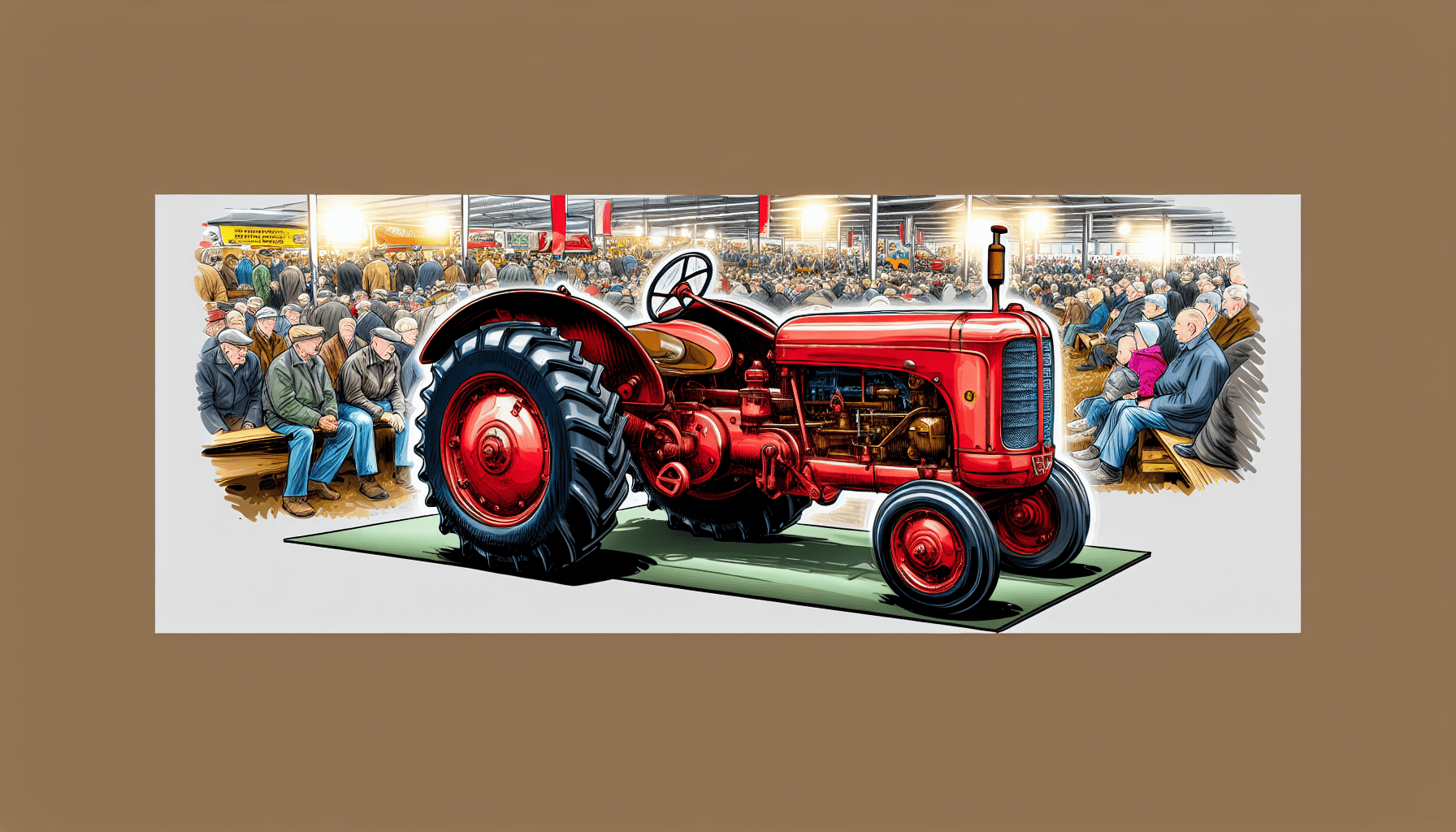
Some classic tractors, due to their rarity, have attracted significant attention and commanded extraordinary prices at auction events. Examples of these exceptional agricultural relics include the 1910 Marshal Colonial Class C and the 1913 Case 60-60. Their acquisition costs reflect a robust interest in such distinct historical artifacts.
The limited availability of these uncommon vintage tractors emphasizes both their collectible nature and historic importance. In this context, we will delve deeper into two specific models that stand out: the Allis-Chalmers Fuel Cell Tractor and the International Harvester HT-341 Turbine Tractor.
Allis-Chalmers Fuel Cell Tractor
The Allis-Chalmers Fuel Cell Tractor, which was developed in 1959, holds historical significance because it was one of the first vehicles powered by a fuel cell. This pioneering technology marked a significant advancement in alternative energy sources for vehicles. This attempt at integrating alternative clean energy sources into farming equipment was ahead of its time, showcasing the innovative spirit of tractor manufacturers.
Demonstrating the practical use of alternative energy in agriculture, the tractor had the ability to haul up to 3,000 pounds. This exploration of clean energy sources in the context of farm machinery underlines the continuous pursuit of innovation and efficiency in the agricultural sector.
International Harvester HT-341 Turbine Tractor
Equipped with a turbine engine capable of generating 85 horsepower, the International Harvester HT-341 was an exceptionally powerful tractor designed as a concept to stretch the limits of existing tractor technology.
This most powerful tractor never transitioned into production because it faced several issues including:
Its high rate of fuel consumption
The loud noise output from its turbine engine
Despite the efficiency in power generation, the lightweight nature of its 90-pound turbine engine made effective power transfer to the ground challenging.
Nevertheless, even though it did not enter mass production, the story of HT-341 remains a fascinating entry in the annals regarding advancements in agricultural machinery.
The Impact of Classic Tractors on Modern Agriculture
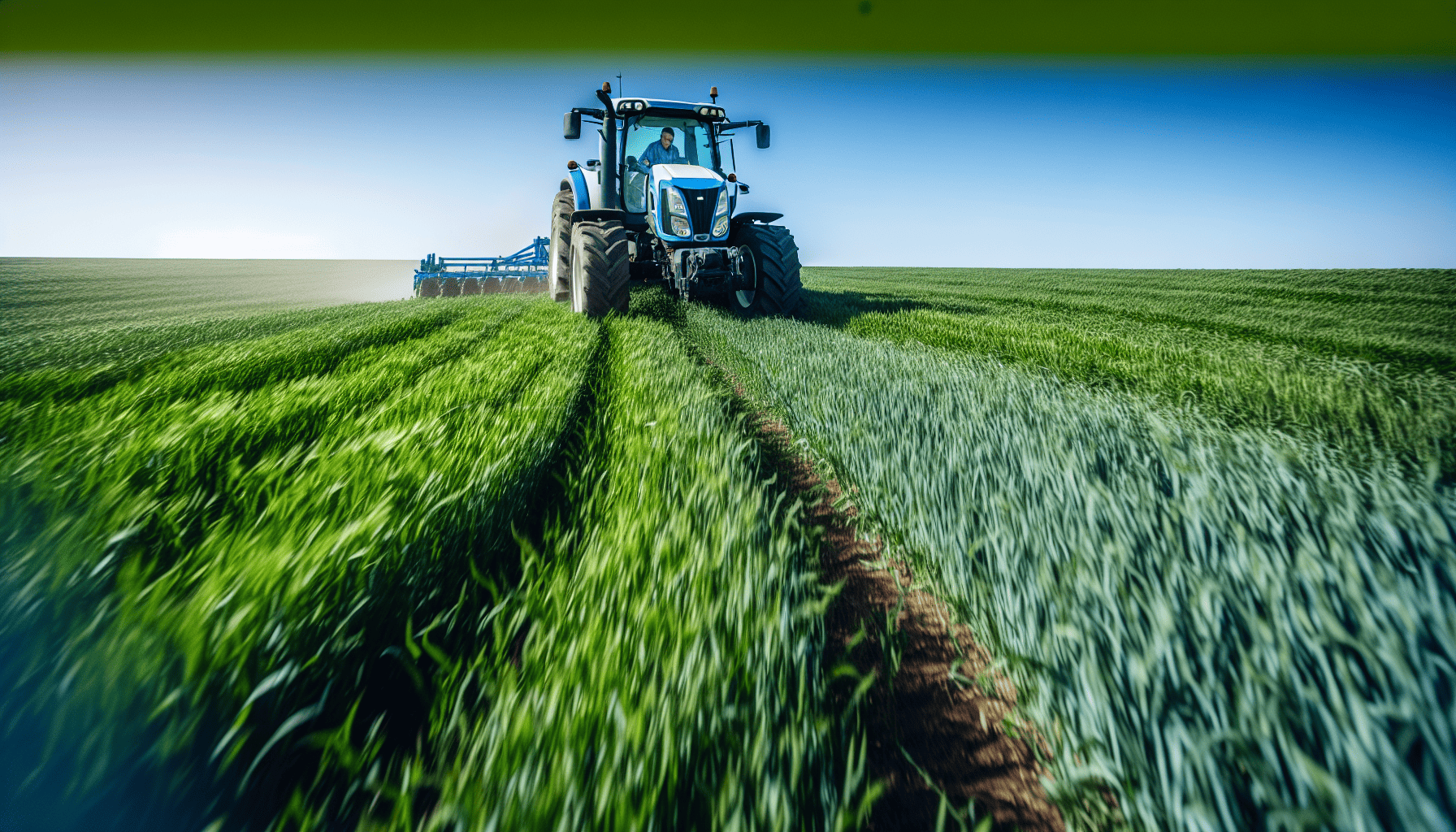
Classic tractors have played a critical role in reshaping modern agriculture. Initiatives like incorporating clean energy alternatives, as exemplified by the Allis-Chalmers Fuel Cell Tractor, to introducing cutting-edge technology with models such as the John Deere 4020, have been pivotal in enhancing farm machinery’s efficiency, adaptability and design.
In the latter part of the 1920s, more accessible tractor pricing contributed significantly to an agricultural transformation that enabled a broader demographic of farmers to adopt mechanized farming techniques. Notably produced between 1964 and 1972 was the John Deere 4020—a model lauded for balancing advanced functionality with affordability—making it a practical option for many in agriculture.
Beyond their impact on farming methods, these historic tractors have also cemented themselves into our cultural fabric. This is particularly evident when considering how esteemed models like the Ferguson TEF 20 Diesel Tractor have achieved an almost legendary status within our collective memory.
Engine Development
Modern farming has been significantly influenced by the engine development in classic tractors. The Massey Ferguson 399 tractor, with its standard 90 HP, six-cylinder engine, exemplifies the substantial engine power harnessed by classic tractors. Transitioning to diesel and efficient engines, tractors permitted farmers to extend working hours and increase the ground covered, leading to heightened farm productivity.
Engine-powered machinery has had a significant impact on agriculture, particularly in terms of land use and efficiency. Some key advancements include:
Reducing the demand for land dedicated to supporting livestock for farming, making more land available for direct crop production.
Incorporating new technologies and replacing outdated parts in classic tractors to meet modern emission standards, which has elevated the complexity of engine rebuilds.
Progressive technological features, such as crop yield monitors and GPS navigation, have further advanced the efficiency of modern tractors beyond their classic predecessors.
These advancements have revolutionized the agricultural industry, breathing new life into farming practices and continuing to drive innovation.
Design and Functionality
The design and functionality of classic tractors have significantly influenced the development of modern farm machinery in terms of both aesthetics and ergonomics. The Mogul 8-16 along with the Farmall IH 8-16 Kerosene tractor models were originally created to cater to smaller farms. Yet these early designs established fundamental principles that spurred the evolution of more sophisticated tractors for large-scale agricultural operations.
With small farm owners as its primary focus, the Allis-Chalmers Model B aimed to facilitate their shift from horse-drawn power to motorized engines. This transition was furthered by innovations such as those seen in the WD45 model, which introduced an improved engine and integrated power steering—demonstrating a commitment towards improving efficiency and adaptability in farming equipment operation.
Tractor Collectors and Enthusiasts
An assembly of collectors and aficionados holds a deep reverence for the historical significance and mechanical splendor inherent in classic tractors. The passion for collecting antique tractors frequently spans generations, as expertise and fervor are passed down from one to the next.
The financial aspect of refurbishing an aged tractor’s engine often comes out to roughly a third of what it would cost to buy a brand-new tractor. This economic practicality renders engine restoration an accessible pursuit within the enthusiast community dedicated to vintage tractors.
Tractor Clubs and Associations
Antique tractor clubs offer an extensive selection of vintage tractors from well-known manufacturers, bringing together enthusiasts with diverse interests. These organizations connect individuals either from particular regions or those who share a keen interest in specific brands and models.
These clubs aren’t just about the tractors. They also focus on conserving and using historical stationary engines that were once crucial to farming operations. The events organized by these tractor clubs create a community spirit among like-minded people, featuring activities such as:
Friendly meet-ups
Collective restoration efforts
Learning experiences including blacksmithing demos
Youth-focused programs to involve and educate the younger generation.
For members seeking advice on antique tractor restorations, locating parts, or expanding their knowledge of agricultural history, these societies provide an invaluable pool of information and support.
Tractor Shows and Events
At tractor exhibitions, enthusiasts can engage in a variety of events including tractor pulls and historical farming demonstrations. These gatherings also often include parades with operating tractors. Enthusiasts are kept informed about the dates, specifics, and latest news regarding upcoming events related to tractors through dedicated online schedules as well as social media outlets like Facebook.
These shows frequently provide an opportunity for attendees to buy, sell or exchange parts and tractors. They might also host auctions where vintage and classic models are purchased by collectors and those interested in restoration projects. The strategic use of social media helps attract a broader spectrum of tractor enthusiasts by promoting shared information exchange and fostering community connections centered around these agricultural machinery events.
Summary
Classic tractors are a cornerstone in the narrative of agricultural progress. They represent the emergence of farming mechanization, which ushered in an era that transformed cultivation methods and set the stage for contemporary agronomy. Models like the Ford 8N and John Deere Model A have carved their place firmly within farm history. The ongoing restoration efforts by enthusiasts highlight both these machines’ magnetic charm and their significant role through time.
The influence of such tractors can still be seen today in current agricultural machinery designs and capabilities. Although we’ve moved forward with technological advancements and more sophisticated farming techniques, there’s a clear lineage traced back to those pioneering models. Each purr from today’s equipment echoes our rich farming past, reminding us not only where agriculture has come from, but also celebrating the enduring strength behind innovation.
Frequently Asked Questions
What is the best vintage tractor?
Choosing the finest vintage tractor is a matter of personal preference and hinges on the unique requirements and tastes of each person.
What is considered the best tractor ever made?
Subjectivity reigns in determining the finest tractor, as it fluctuates with personal tastes and requirements.
What is the average price of a tractor?
Depending on the size and engine capacity, a tractor can typically cost anywhere between $9,000 to $80,000.
What is the significance of classic tractors?
Historic tractors are emblematic of the advent of mechanization within agriculture, heralding a shift to more modern farming techniques and advancement in tractor technology.
The undeniable influence these machines have had on agricultural practices and technological improvements is profound.
What is involved in the process of tractor restoration?
Restoration of a tractor necessitates thorough work on sheet metal, overhauling the engine, and finishing with paint application and decal placement to preserve its authentic look and operation.


